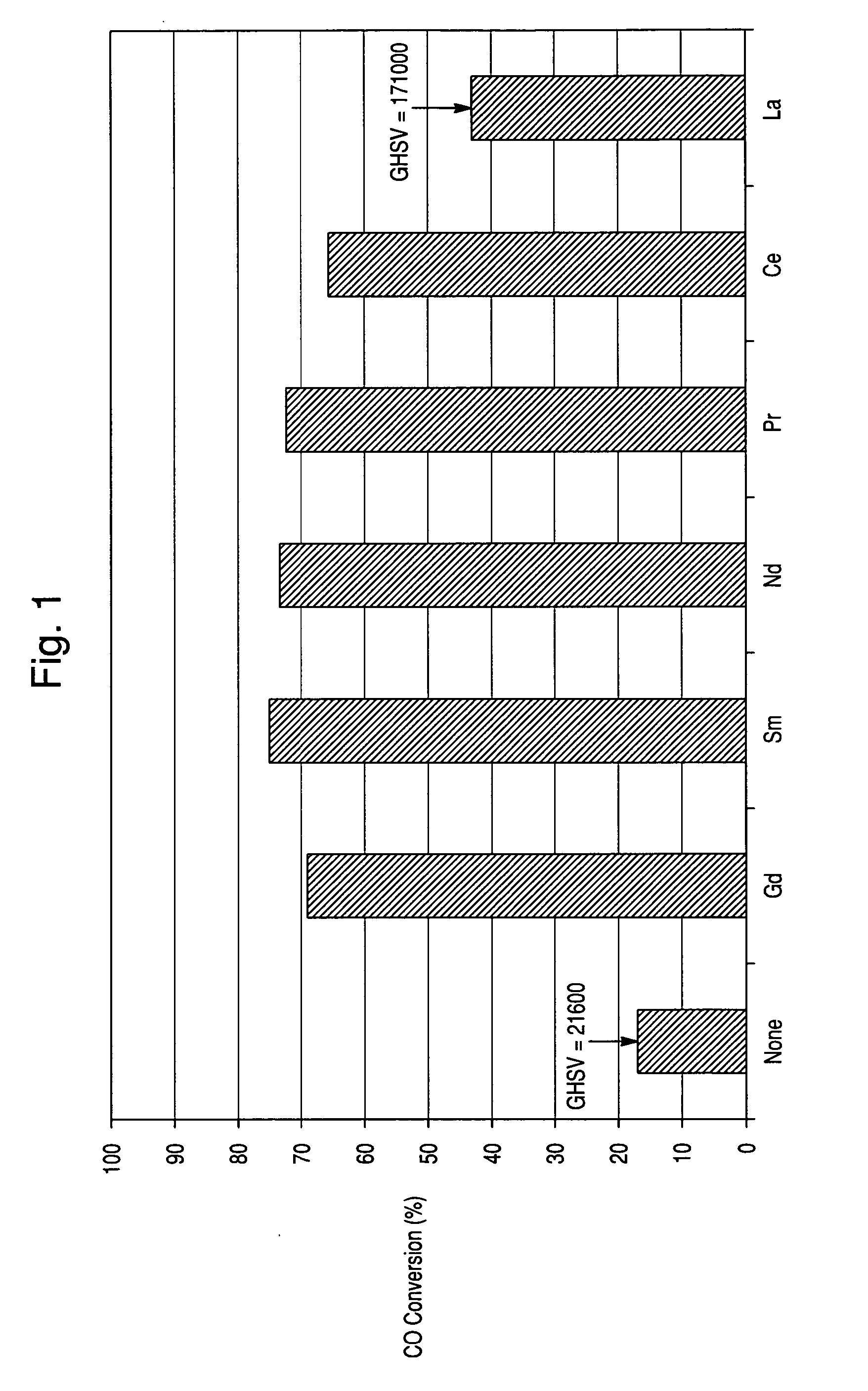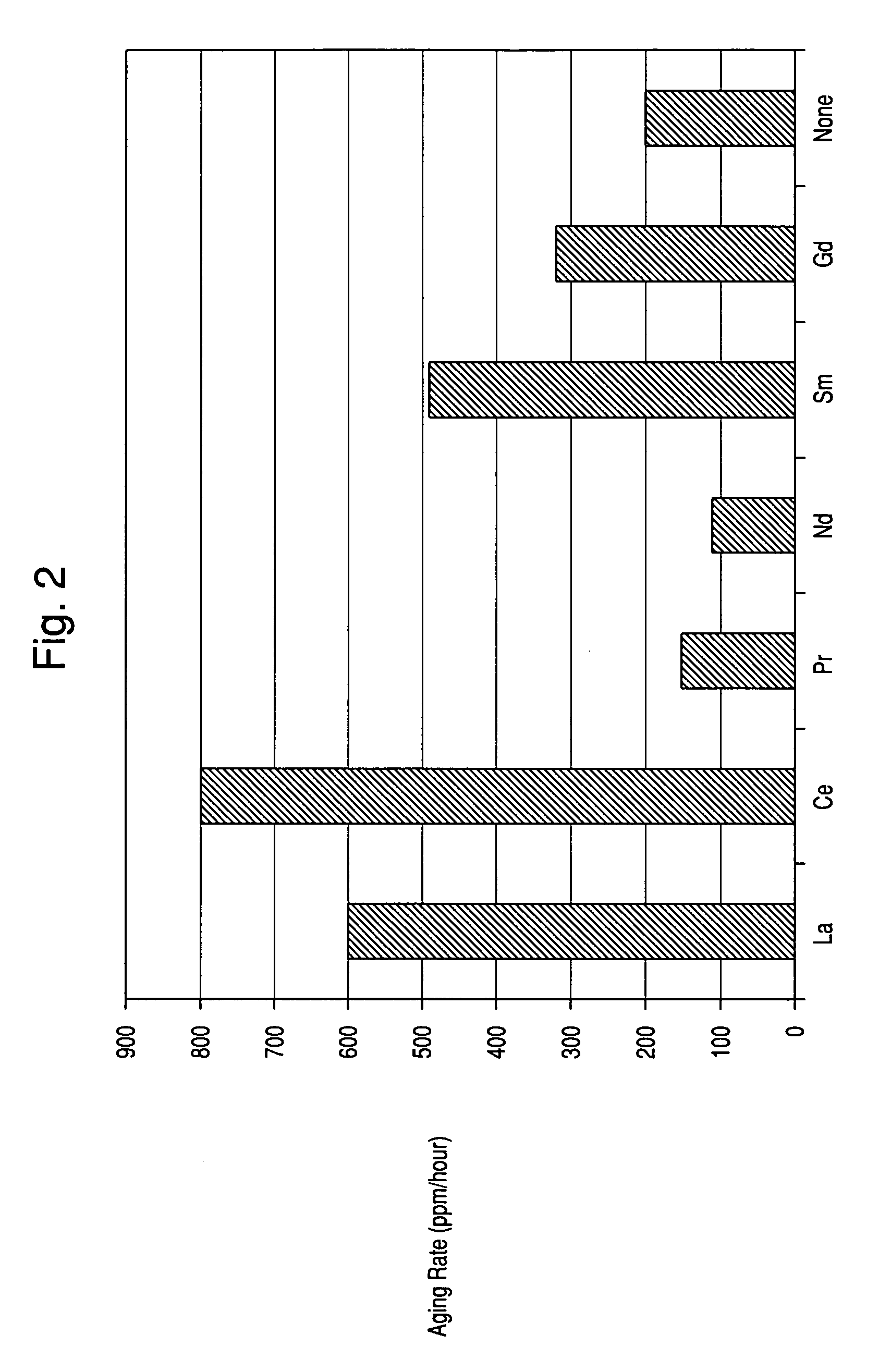Precious metal water-gas shift catalyst with oxide support modified with rare earth elements
a technology of rare earth elements and shift catalysts, which is applied in the direction of metal/metal-oxide/metal-hydroxide catalysts, physical/chemical process catalysts, bulk chemical production, etc., can solve the problems of large hydrogen loss, catalyst damage, and undesirable release of methane, so as to improve the activity and stability of the catalyst and improve the stability
- Summary
- Abstract
- Description
- Claims
- Application Information
AI Technical Summary
Benefits of technology
Problems solved by technology
Method used
Image
Examples
example 1
[0047] Neodimium-modified alumina support material was prepared by impregnating Al2O3 powder with an appropriate amount of aqueous solution of neodymium nitrate hexahydrate, which was followed by drying for 4 hours at 120° C. in air and calcining for 2 hours at 450° C. in air. The obtained neodimium-modified alumina support material contained 5 wt. % Nd2O3 relative to Al2O3. The support material was further impregnated with platinum amine salt, dried at 120° C. and calcined at 500° C. so that the resulting catalyst contained 3 wt. % Pt relative to the weight of the support material.
[0048] 0.75 gram of the catalyst was loaded into a laboratory flow reactor and heated up to 350° C. in the flowing feed gas (a mixture of 9.8% CO, 7.7% CO2, 52.5% H2, and 30% H2O). The catalyst initiated the water-gas shift reaction CO+H2O→CO2+H2. Progress of the reaction was controlled by monitoring the CO outlet concentration with an online infrared gas analyzer ZRH (Fuji Electric, Japan). The catalyst...
example 2
[0050] A catalyst was prepared as described in Example 1, except that lanthanum nitrate hexahydrate was used in place of neodimium nitrate hexahydrate. The catalyst was tested as described in Example 1, and the test results are shown in FIGS. 1-2.
example 3
[0051] A catalyst was prepared as described in Example 1, except that praseodimium nitrate hexahydrate was used in place of neodimium nitrate hexahydrate. The catalyst was tested as described in Example 1, and the test results are shown in FIGS. 1-2.
PUM
| Property | Measurement | Unit |
|---|---|---|
| wt. % | aaaaa | aaaaa |
| wt. % | aaaaa | aaaaa |
| wt. % | aaaaa | aaaaa |
Abstract
Description
Claims
Application Information
 Login to View More
Login to View More - R&D
- Intellectual Property
- Life Sciences
- Materials
- Tech Scout
- Unparalleled Data Quality
- Higher Quality Content
- 60% Fewer Hallucinations
Browse by: Latest US Patents, China's latest patents, Technical Efficacy Thesaurus, Application Domain, Technology Topic, Popular Technical Reports.
© 2025 PatSnap. All rights reserved.Legal|Privacy policy|Modern Slavery Act Transparency Statement|Sitemap|About US| Contact US: help@patsnap.com



